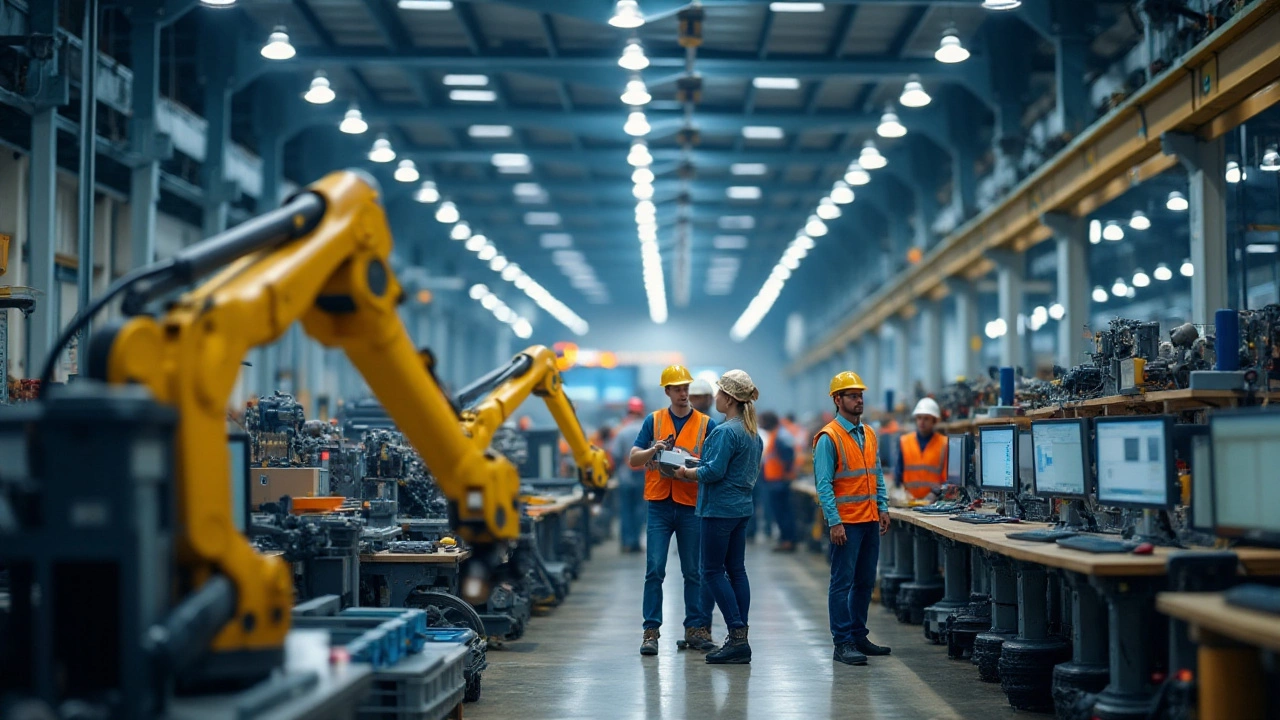Deindustrialization: What’s Happening and Why It Matters
When you hear the word "deindustrialization" you might picture empty factories and quiet towns. That’s the core idea – a slowdown or reversal of traditional manufacturing activity. It’s not just about a few plants closing; it’s a shift that touches jobs, supply chains, and even the products you buy every day.
India has long been known for its bustling factories – from pharma labs in Hyderabad to steel mills in Jharkhand. In the last decade, however, many of those sectors face new pressures: high energy costs, stricter emissions rules, and rising competition from automated hubs abroad. Those forces push companies to rethink where and how they produce.
Why Industries Are Pulling Back
First, costs have jumped. Labor wages are rising, and the price of raw materials like steel and copper is volatile. When a company’s bill of materials spikes, the profit margin shrinks, so executives look for cheaper alternatives, often moving production to countries with lower expenses or to automated facilities that need fewer workers.
Second, regulation matters. The shift from BS4 to BS6 emission standards in India forced many diesel engine manufacturers to upgrade or shut down. Those upgrades require big capital outlays, and not every firm can afford them. The result? Some plants close, others relocate, and the overall industrial footprint contracts.
Third, technology is a game‑changer. Robotics, AI‑driven supply chains, and 3‑D printing let a single smart factory replace several older ones. While this boosts efficiency, it also means fewer traditional jobs on the shop floor. Workers need new skills, and those who don’t adapt may find themselves out of work.
What It Means for India’s Economy
Deindustrialization doesn’t spell disaster automatically. It can free up resources for higher‑value activities like research, design, and services. Take the pharma sector: India still dominates generic drug manufacturing, but companies are investing more in biotech R&D to stay ahead of the curve.
In the steel world, places like Pittsburgh or Birmingham in the U.S. have reinvented themselves by focusing on advanced materials and specialist engineering. Indian steel hubs can follow a similar path, shifting from bulk production to niche alloys that command higher prices.
For consumers, deindustrialization can affect product prices and availability. If a furniture maker moves its cutting operations overseas, the cost of a sofa might rise, or the design could change to suit new manufacturing methods. Understanding these links helps you make smarter buying decisions.
Governments play a big role too. Incentives for clean energy, subsidies for automation, and training programs for displaced workers can smooth the transition. India’s push for “Make in India” tries to balance the need for modern factories with the goal of keeping jobs at home.
Bottom line: deindustrialization is a mix of cost pressures, regulation, and tech upgrades. It reshapes where things are made, who makes them, and what skills are needed. By watching the trends – from pharma labs to steel towns – you can see the bigger picture of how the Indian economy is evolving.
Stay curious, keep an eye on policy changes, and think about how new technologies might change the jobs you or your friends do. The industrial landscape is moving fast, and being informed now gives you a leg up for whatever comes next.

Is America Facing a Manufacturing Decline?
America is experiencing significant shifts in its industrial landscape, leading to concerns about potential deindustrialization. The decline in manufacturing jobs, increased automation, and the rise of global competitors are influencing these changes. Government initiatives and policies aim to reverse this trend by investing in modern manufacturing methods, job retraining programs, and incentivizing domestic production. Analyzing current data and trends offers insight into whether the U.S. is truly deindustrializing or adapting to a new industrial era.
